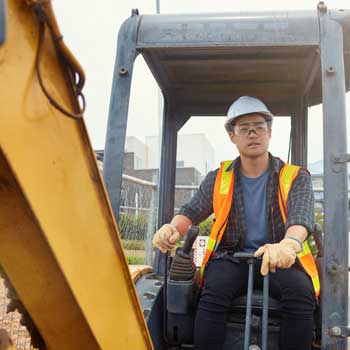When you hear the word “construction,” what do you think of? Do you see burly men carrying around heavy materials, swinging tools and digging ditches?
Construction work is often perceived as hard, dirty and unskilled labor. Some people think that it’s a last resort for people who don’t have the education to do other kinds of jobs.
But while some aspects of the industry are physical in nature, working in construction isn’t the brutish work that you may think of. Construction crafts often require a high degree of skill and expertise, while technological innovations and safety enhancements are making the physical aspects easier to manage.
Here’s why construction work isn’t just manual labor.

With all the complex systems that must work together in order to create structures like hospitals, schools and sports stadiums, it’s clear that construction craft professionals need special skills and abilities to get the job done right.
Although many construction positions don’t require a bachelor’s degree, that doesn’t mean the industry’s workforce lacks an education. Rather than going to a university, most craft professionals get their training and education through other means such as technical schools, apprenticeships and on-the-job training. While book learning is involved, there is much more hands-on learning than you would see in other postsecondary education options. Learning is often done in the field, and trainees even get paid for what they accomplish on the job site.
Training becomes even more extensive for professionals seeking certain licenses and journeyman status. Becoming a journeyman typically requires about 8,000 hours – around four years – of time in the field plus additional classroom work. With even more experience and through displaying competency and expertise, journeymen can be elevated to master status.
The result of all this training is a set of unique and specific skills that help the craft professional work within different specializations within the industry. Electricians, plumbers, crane operators, welders and others all hold knowledge in critically important areas where they need to do a job and do it right. These roles are far from unskilled labor – these people must be truly skilled in their craft for projects to be built correctly and safely.
While many of these construction jobs do have some degree of physical work required, there are also other positions within construction that are more based around office settings or management. Architects and civil engineers take part in the planning and design stages of a project, working with blueprints and 3D models. Project managers, superintendents and safety supervisors are often on the job site overseeing and leading other team members.
When thinking about construction work, you should understand that there are many different, important roles and critical skills that help execute each and every project.

Compared to even just a few decades ago, the construction industry has made great strides in the areas of technology and safety, helping to limit the amount of workload on individuals as well as improving efficiency and saving time and money.
Tools, machinery and other equipment are lighter, more powerful and easier to use. Newer processes such as prefabrication reduces the amount of on-site work that must be done from scratch. The use of drones and Building Information Modeling (BIM) helps to make some tasks that would need to be done in-person possible remotely. And an overall greater focus on safety procedures and proper use of personal protective equipment (PPE) can reduces some dangers and stresses from the work, such as falls or heat exhaustion.
One great example of how technology and safety are converging to reduce the manual labor in construction is the emerging utilization of exoskeletons. These suits are a form of wearable assistive technology that adds support and strength to the person wearing it. Exoskeletons and exosuits can have various helpful components include back and arm support, chairless chairs, and even extra sets of hands.
Although exoskeletons are still in the early stages of adoption, this and other innovations are set to make a big difference in the future of construction work.
While there is more physicality in construction careers than sitting in a cubicle all day, the outdated view of the industry being full of back-breaking work is far from a clear picture. Many craft professionals go through years of training to become journeymen or masters in their field, refuting the notion that someone with a hard hat is uneducated and stuck doing hard jobs. For the more physical aspects of the work, progress in technology and safety are helping to ease many burdens.
With a projected shortage of one million craft professionals by 2023, the construction industry is facing a workforce crisis partially caused by misperceptions of the industry. As we work to educate and demonstrate the realities and benefits of careers in construction, Build Your Future hopes to ensure a healthy future for an essential industry.